Our Lady of Divine Love
Oil on canvas, 108 x 141 cm
With frame, 127 x 149 cm
The work in question, dating back to the 17th century, recovers the famous Madonna of Divine Love by Raphael Sanzio (Urbino, 1483 – Rome, 1520), an oil painting on wooden panel created with the intervention of some students of his workshop around 1516-1518, currently preserved at the National Museum of Capodimonte in Naples, where it is part of the prestigious Farnese Collection, testimony of its acquisition by Cardinal Alessandro Farnese the Younger in 1564.
According to historical sources, particularly the Lives of Giorgio Vasari, the painting was executed for Leonello Pio da Carpi, lord of Meldola, a commission emblematic of the success achieved by the artist from Urbino, whose works were sought after by the most influential families of the time. The title it bears today, Madonna del Divino Amore, was attributed to it only in 1824 in reference to the publication of a lithograph reproducing Raphael's Madonna in the German volume Rafael Sanzio aus Urbino by Friedrich Rehberg, which emphasized the centrality of the theme of charity and spiritual and maternal love within the composition. The work is based on the iconographic scheme of the Holy Family with Saint Elizabeth and the Infant Saint John, a typology that Raphael had already successfully explored (see for example the Canigiani Holy Family at the Alte Pinakothek), reaching the pinnacle of synthesis here. The composition, built on a typically Renaissance pyramidal model, sees the five figures gathered in a dark and solemn architectural environment, in a classical style, with an opening in the background that reveals a barely hinted landscape. The Virgin Mary, seated in the left foreground, with her hands clasped in a pose of tender contemplation, supports the Child on her knees, the latter reaching out in a dynamic and blessing gesture towards the Infant Saint John, kneeling on his kneeling left as he offers his processional cross, symbol of Christ's future sacrifice, in a gesture of prophetic prayer or offering. The interaction between the children, with the cross as the visual fulcrum, gives the painting an intimate theological meaning: the meeting between the cousins anticipates and symbolizes, in fact, the future sacrifice and Passion of Christ. Behind this first central group appears the elderly Saint Elizabeth who, intent on holding the Child, creates with her presence a compositional triangle that gives a further plane of emotional depth to the scene. Finally, the artist also chooses to show us a secluded Saint Joseph, placed in the background in an upright and almost hidden position, who observes the scene through an architectural opening, emphasizing his function as a silent guardian and witness to the divine mystery. In the painting presented here, the use of an intense colour palette –in particular the bright pink of the Virgin's cloak, the saturated blue of her robes and the earthy tones of the older figures – and the management of light, which emphasises the soft flesh of the children and the intense faces, suggest a dating in the 17th century, perhaps within the context of Italian devotional painting or a regional school influenced by the great masters of the sixteenth century, despite Raphael's formal harmony being fully respected. Beyond its high stylistic quality, the work stands out for its intense emotional charge: the gazes and gestures, particularly that of Saint Elizabeth and Saint Joseph in the background, suggest a meditation on the fate of the two children, inserting an element of solitude and awareness of divine sacrifice into an otherwise serene atmosphere. The work is, ultimately, a fundamental example for reviving Raphael's Roman painting, which combines the formal perfection of Classicism with a growing sensitivity to emotional narrative and the monumentality of forms.


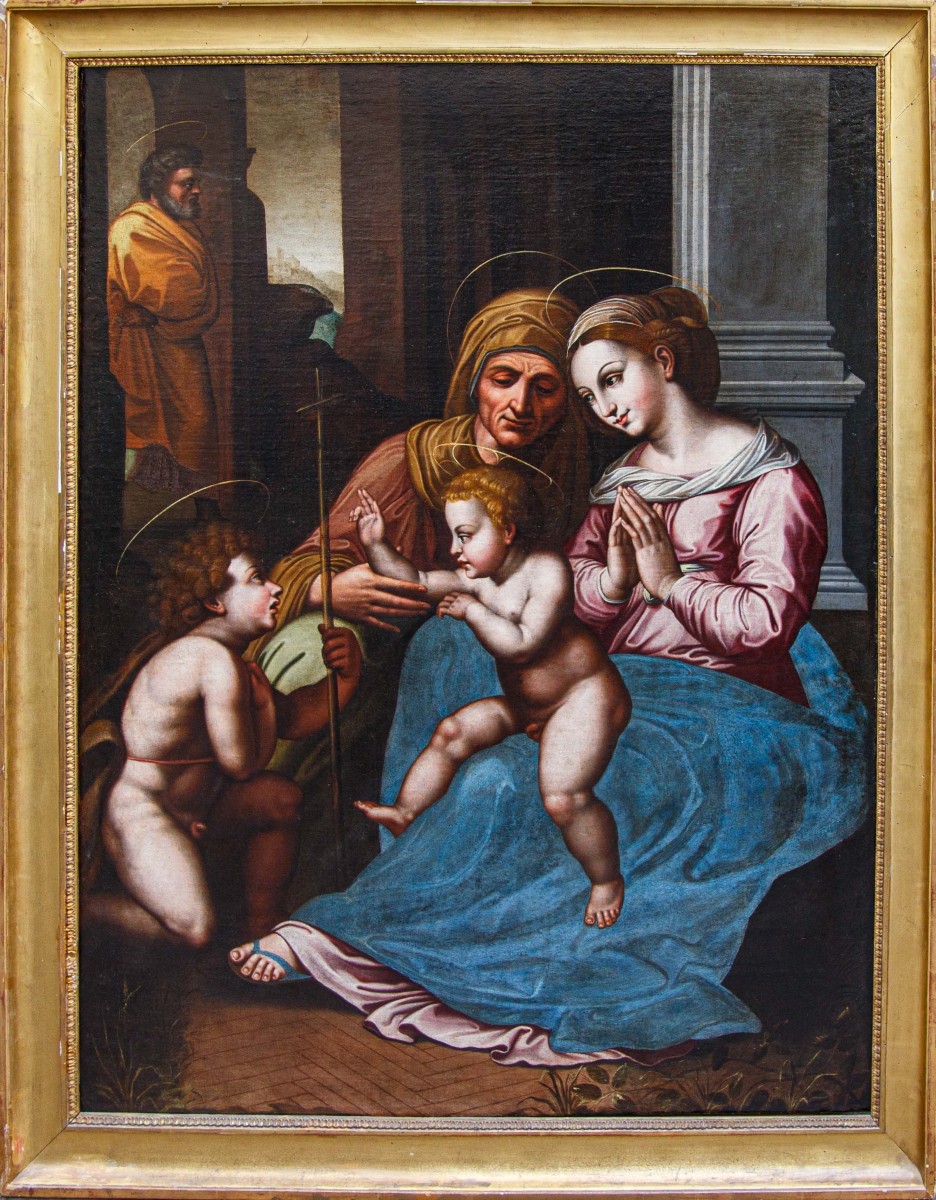
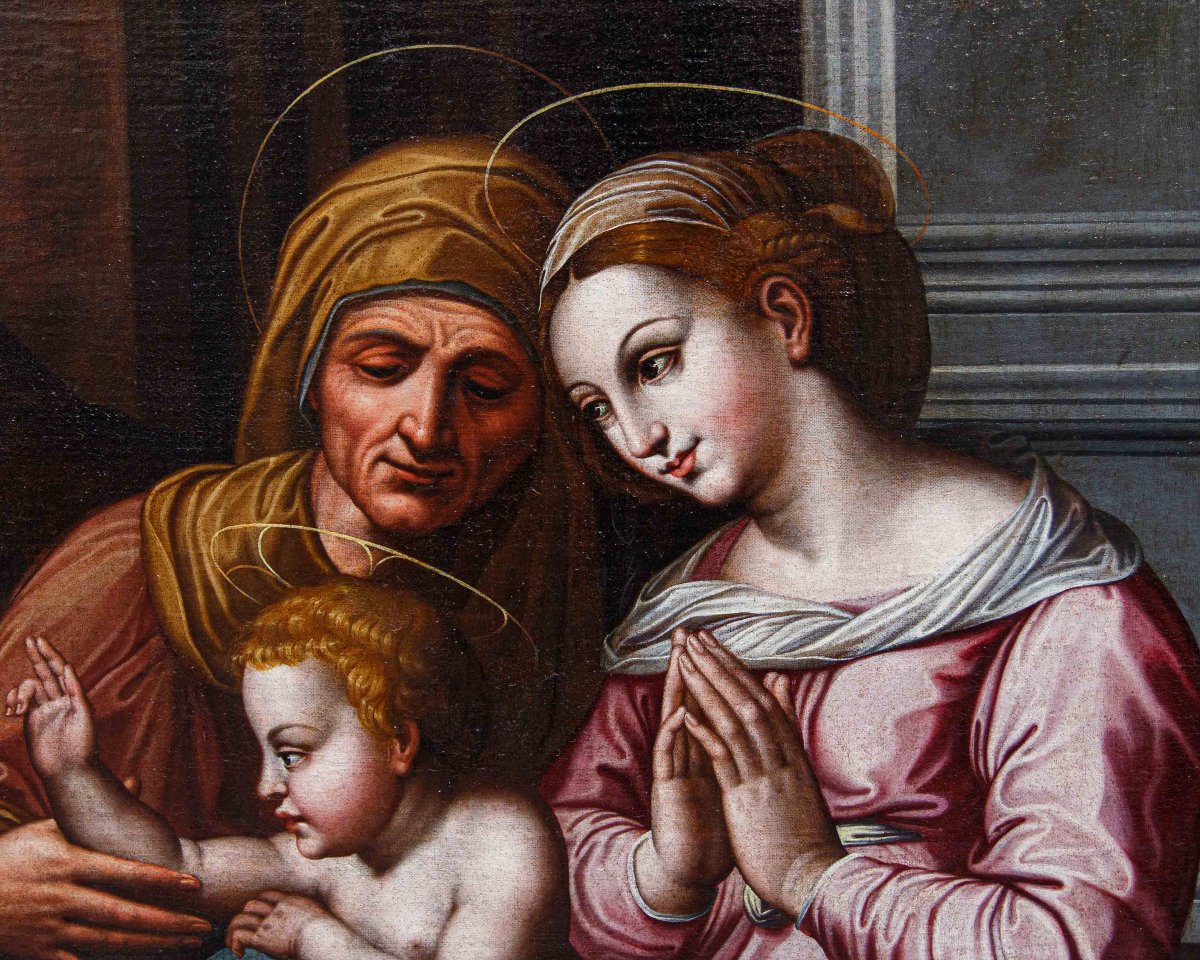

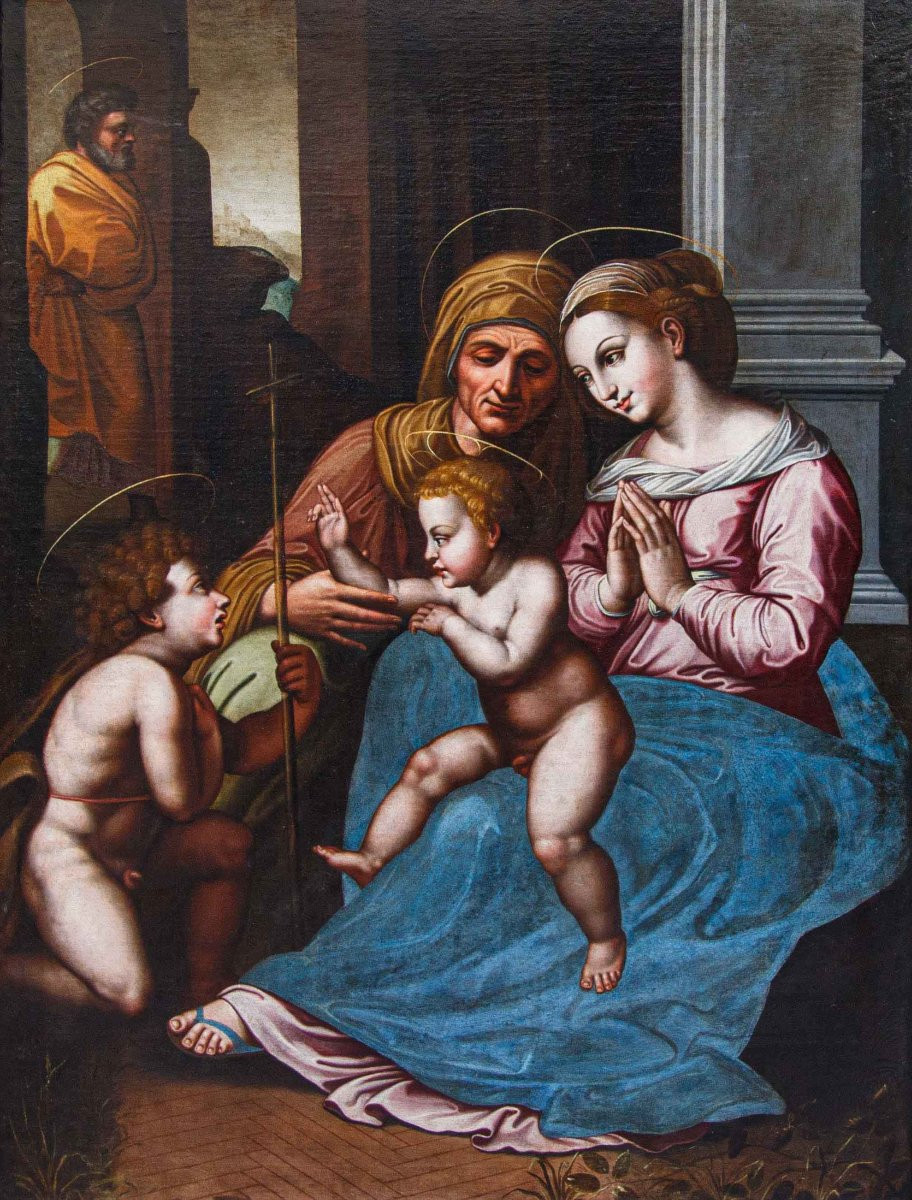

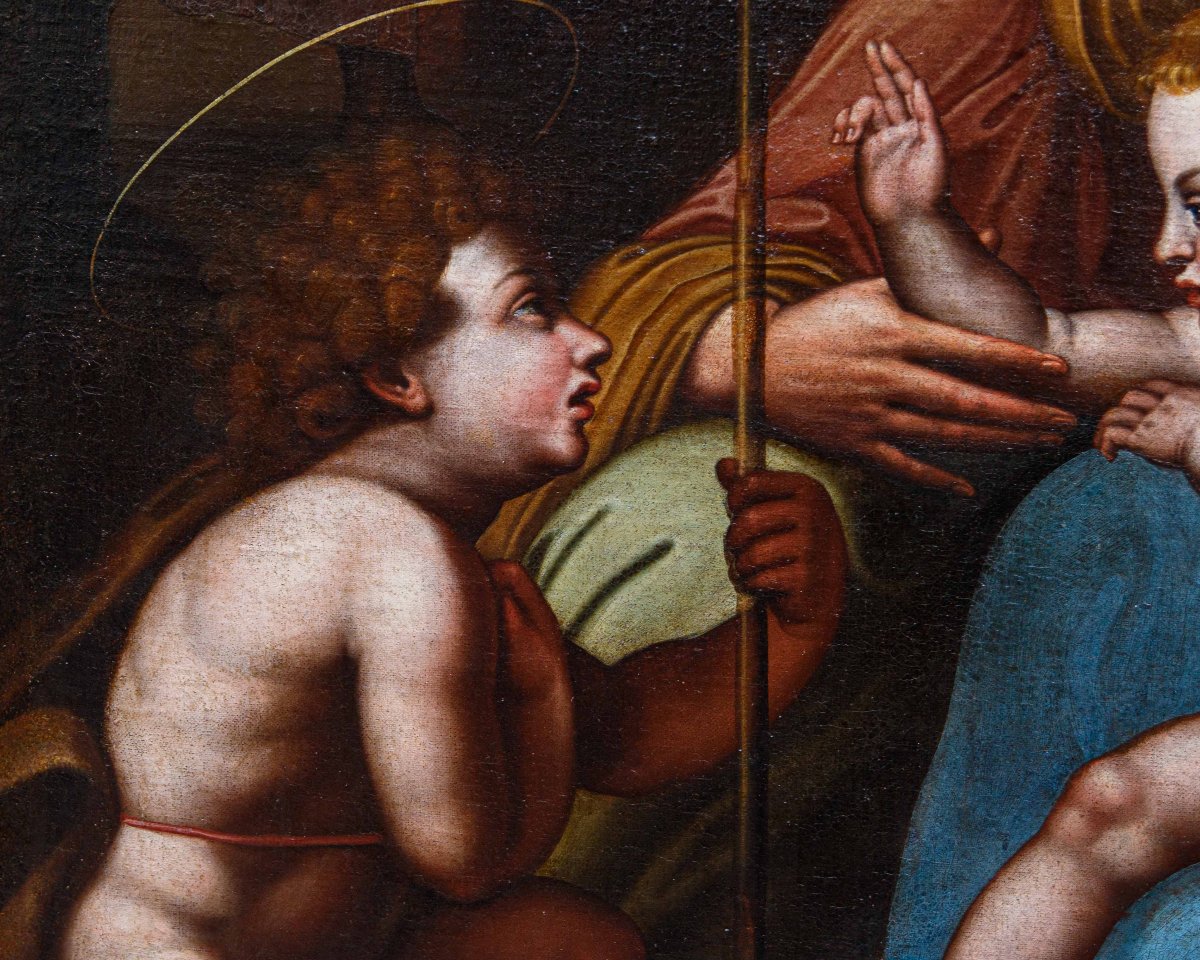
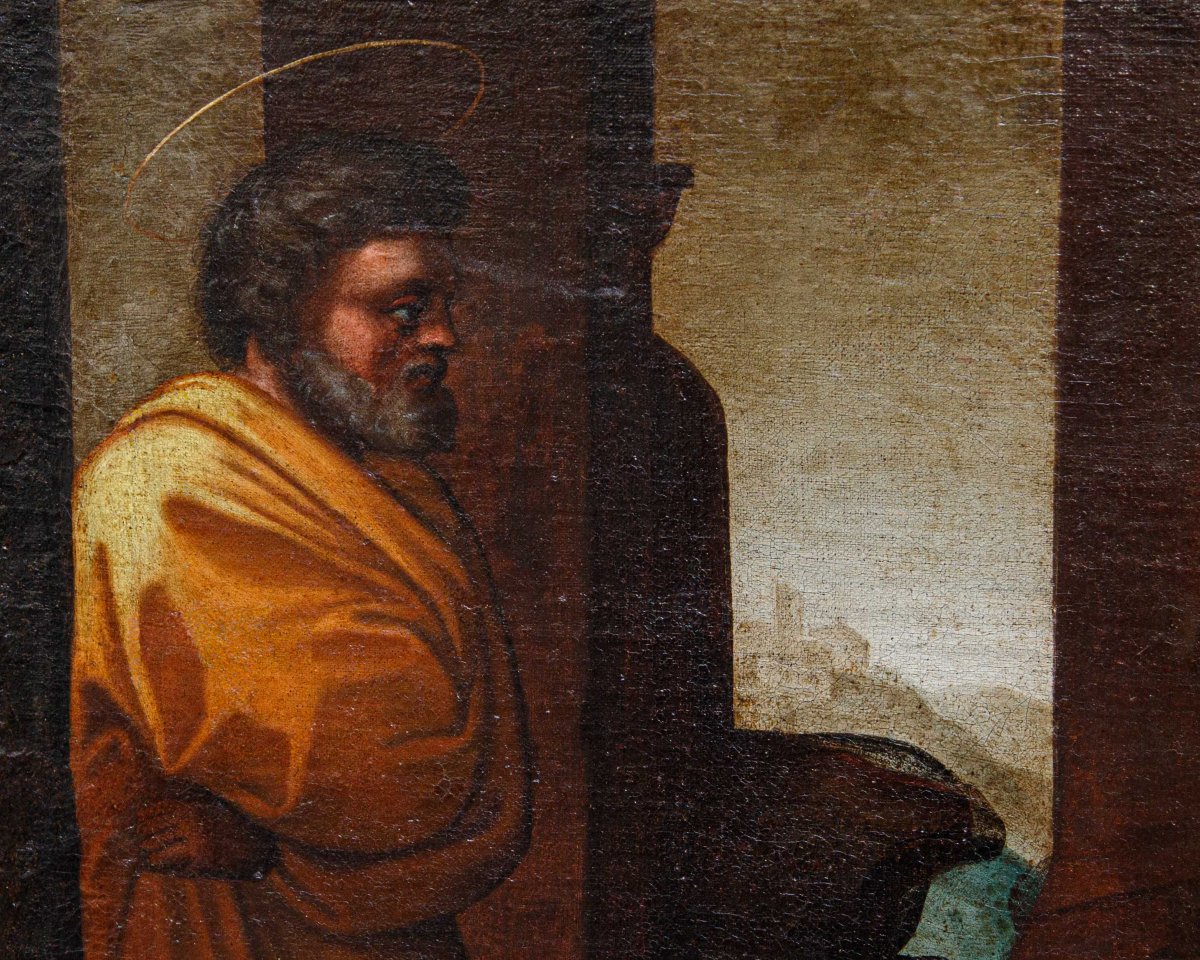

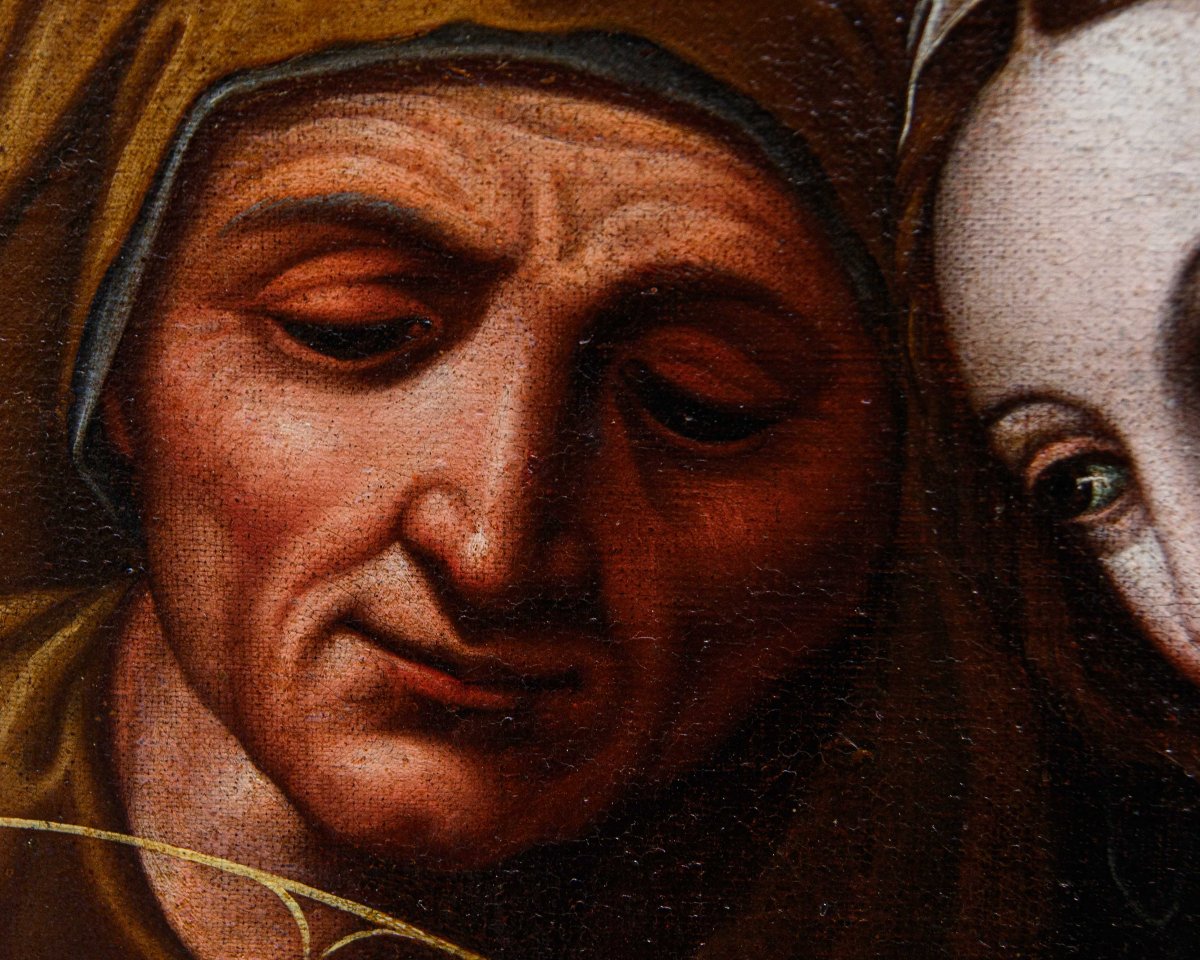

















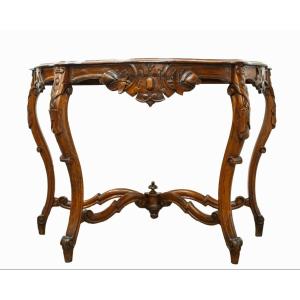



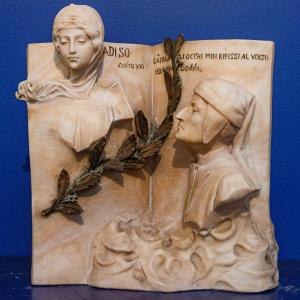





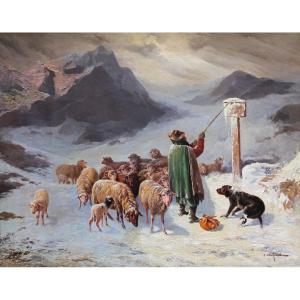
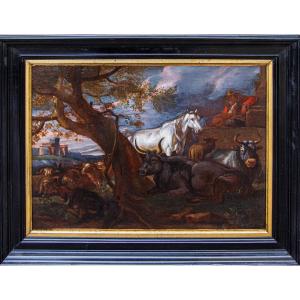

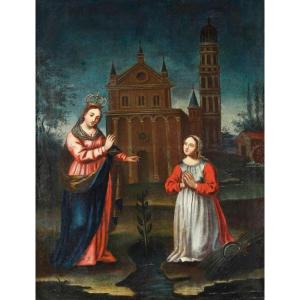
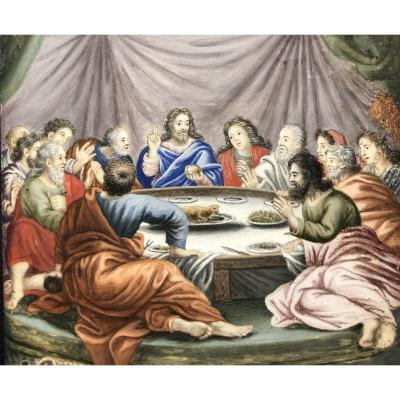
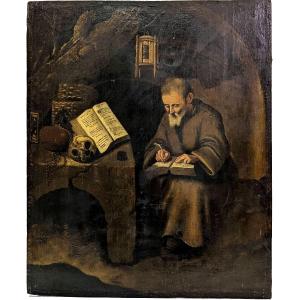




 Le Magazine de PROANTIC
Le Magazine de PROANTIC TRÉSORS Magazine
TRÉSORS Magazine Rivista Artiquariato
Rivista Artiquariato